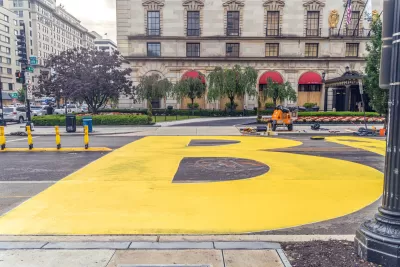If planners want to address the impacts of exclusionary planning, historical inequities, and policies that ignore the needs of women and minorities, they must address systemic inequities within the field itself.

Despite their high rate of participation in civic life (more than twice as high as the general population) and strong presence in community meetings and organizations, Black women are still vastly underrepresented in the urban planning field. Until the profession diversifies internally, policy decisions will continue to overlook underrepresented communities.
It's no question that women have made significant gains in the planning profession in recent years, but the growth hasn't been uniform, with the transportation, design, and engineering subfields still skewing heavily toward male planners. While women now make up almost half of the American planning workforce, Black women only comprise 3% of professional planners, and the percentage of planning degrees awarded to Black graduates is stagnant.
At the core of the need for more diverse planning departments is trust. In order to even engage with public processes—often confusing and inaccessible—communities have to feel that their voices will be "championed by trustworthy agents within the system" that are working for their goals.
A good start, writes Lindiwe Rennert, is to recognize the important community-building work that Black women without formal training do. "Black women have been doing planning work without academia accredited planning training since the concept of planning was birthed," she says. Now it's time to value it.
FULL STORY: Black Women in Planning: Where Are We?

Planetizen Federal Action Tracker
A weekly monitor of how Trump’s orders and actions are impacting planners and planning in America.

Maui's Vacation Rental Debate Turns Ugly
Verbal attacks, misinformation campaigns and fistfights plague a high-stakes debate to convert thousands of vacation rentals into long-term housing.

San Francisco Suspends Traffic Calming Amidst Record Deaths
Citing “a challenging fiscal landscape,” the city will cease the program on the heels of 42 traffic deaths, including 24 pedestrians.

Amtrak Rolls Out New Orleans to Alabama “Mardi Gras” Train
The new service will operate morning and evening departures between Mobile and New Orleans.

The Subversive Car-Free Guide to Trump's Great American Road Trip
Car-free ways to access Chicagoland’s best tourist attractions.

San Antonio and Austin are Fusing Into one Massive Megaregion
The region spanning the two central Texas cities is growing fast, posing challenges for local infrastructure and water supplies.
Urban Design for Planners 1: Software Tools
This six-course series explores essential urban design concepts using open source software and equips planners with the tools they need to participate fully in the urban design process.
Planning for Universal Design
Learn the tools for implementing Universal Design in planning regulations.
Heyer Gruel & Associates PA
JM Goldson LLC
Custer County Colorado
City of Camden Redevelopment Agency
City of Astoria
Transportation Research & Education Center (TREC) at Portland State University
Jefferson Parish Government
Camden Redevelopment Agency
City of Claremont





























